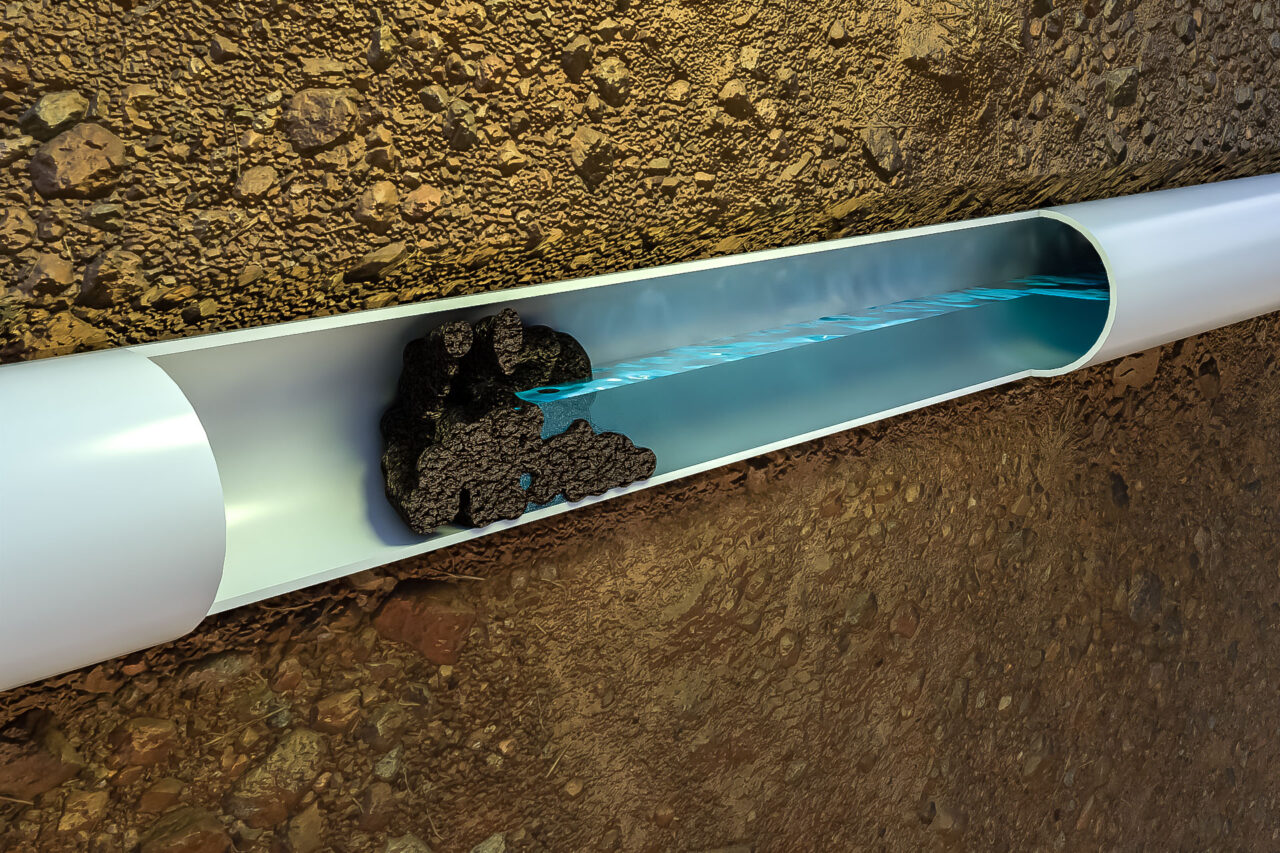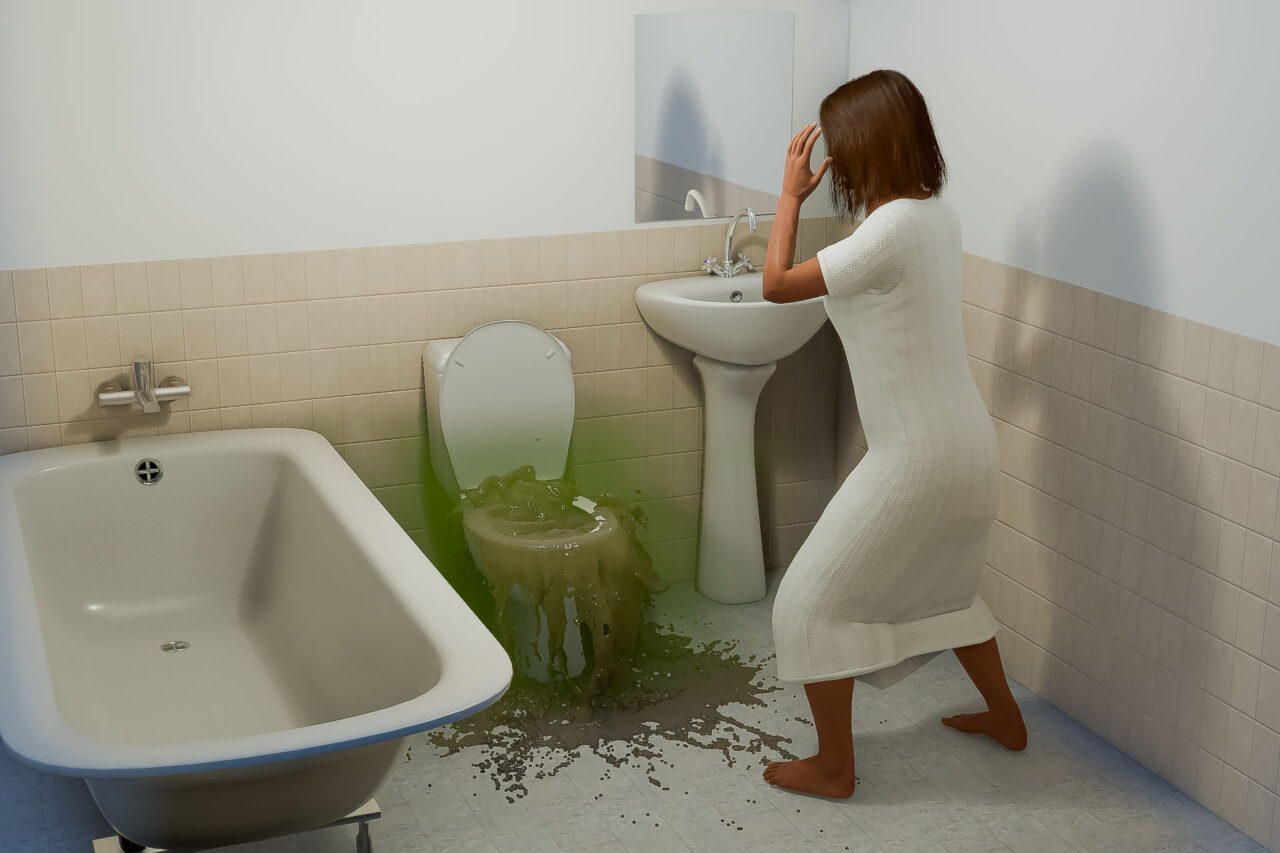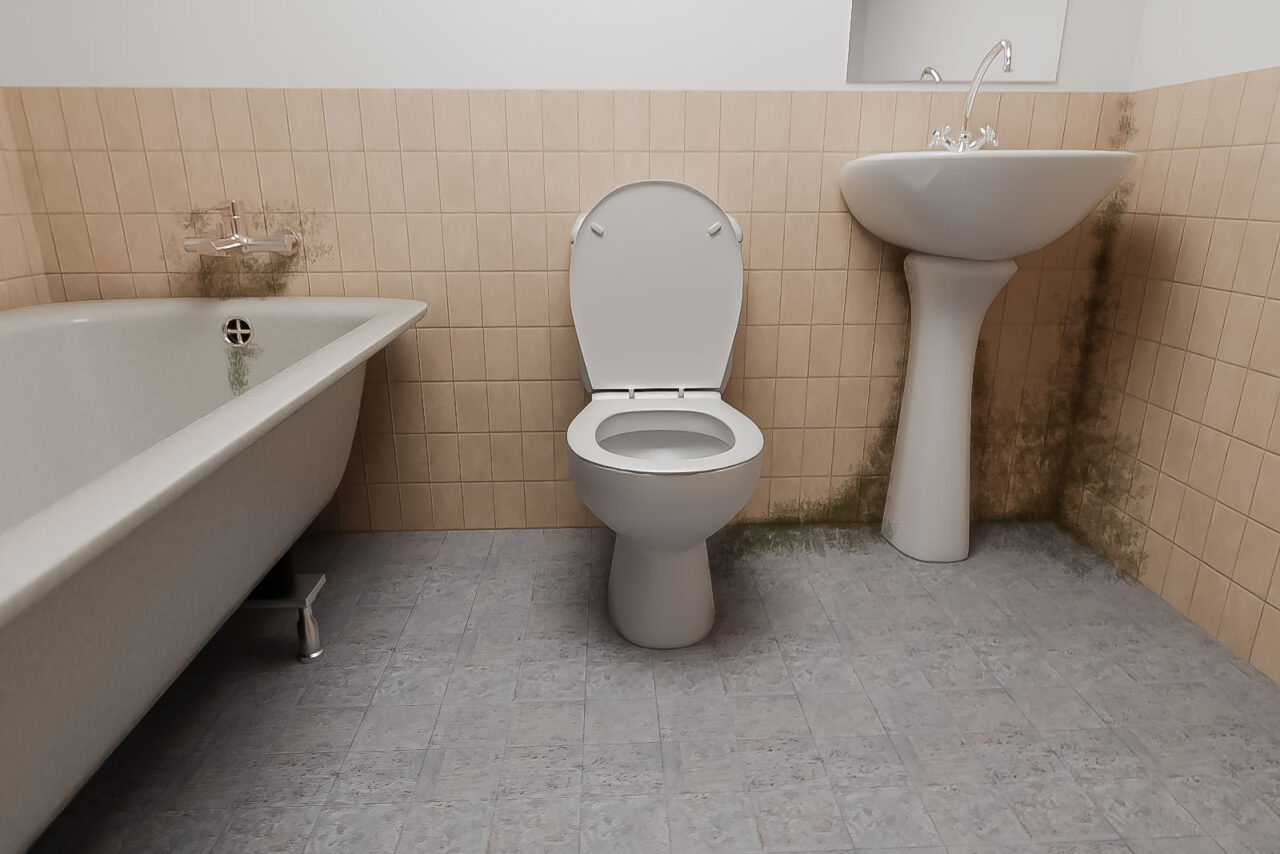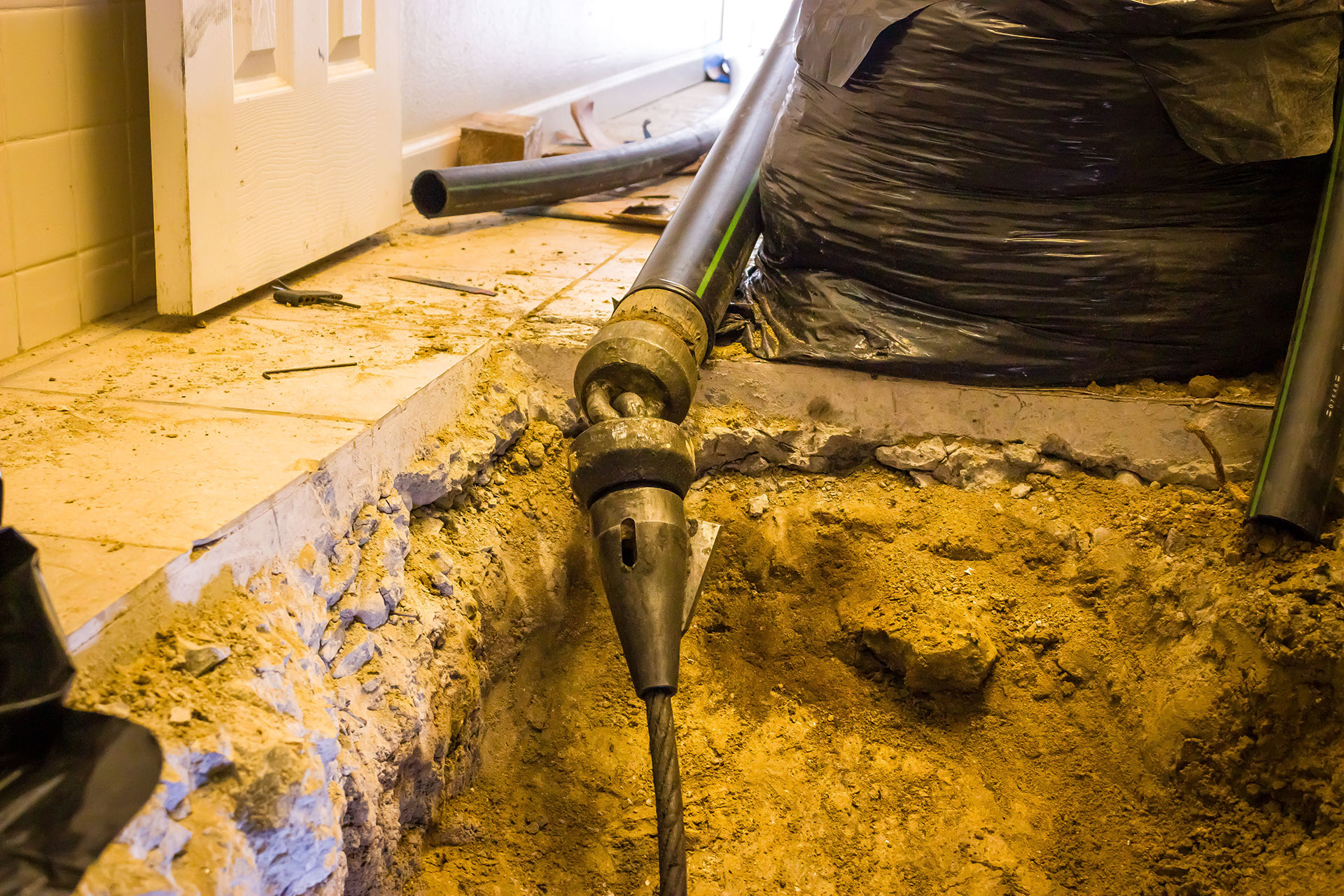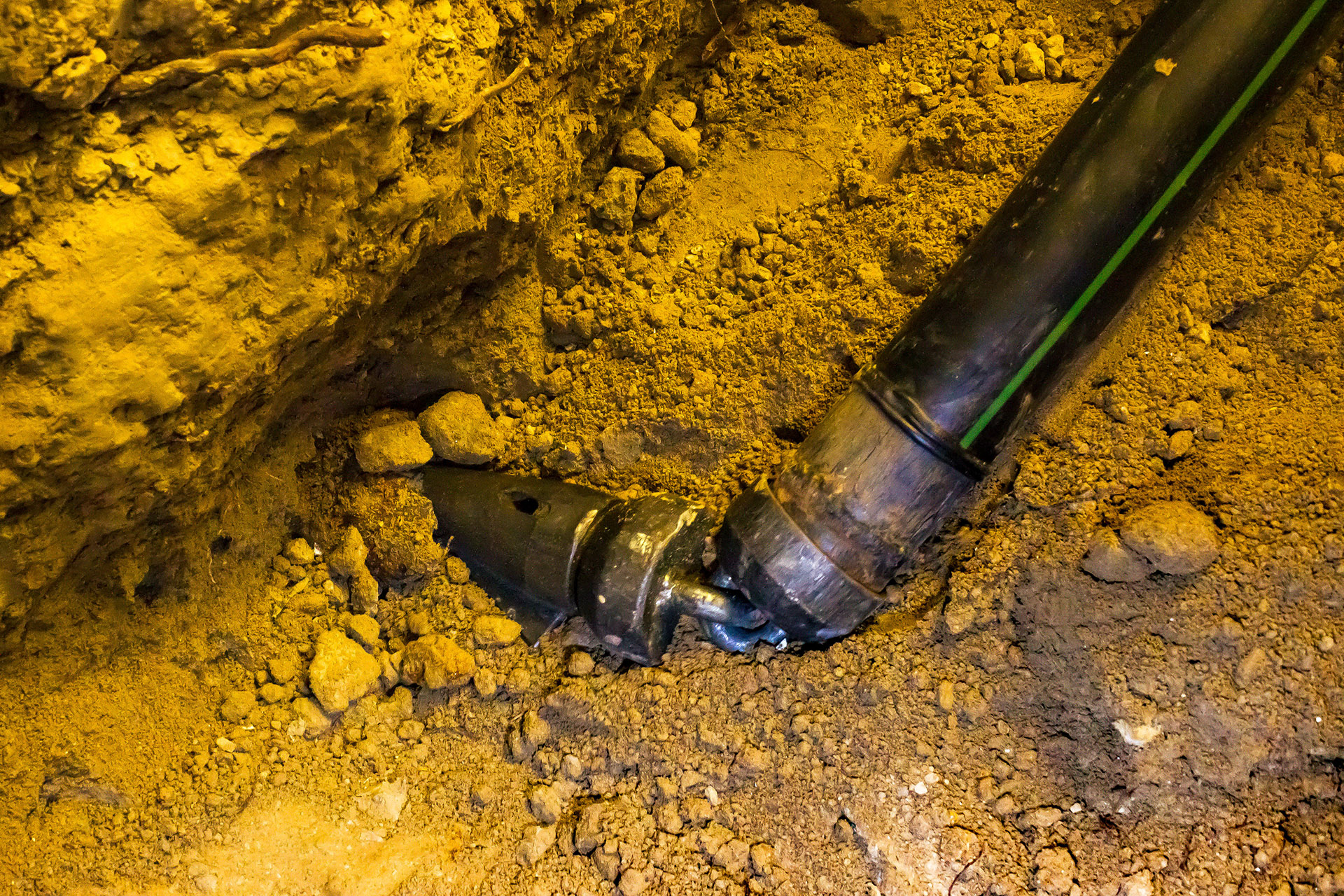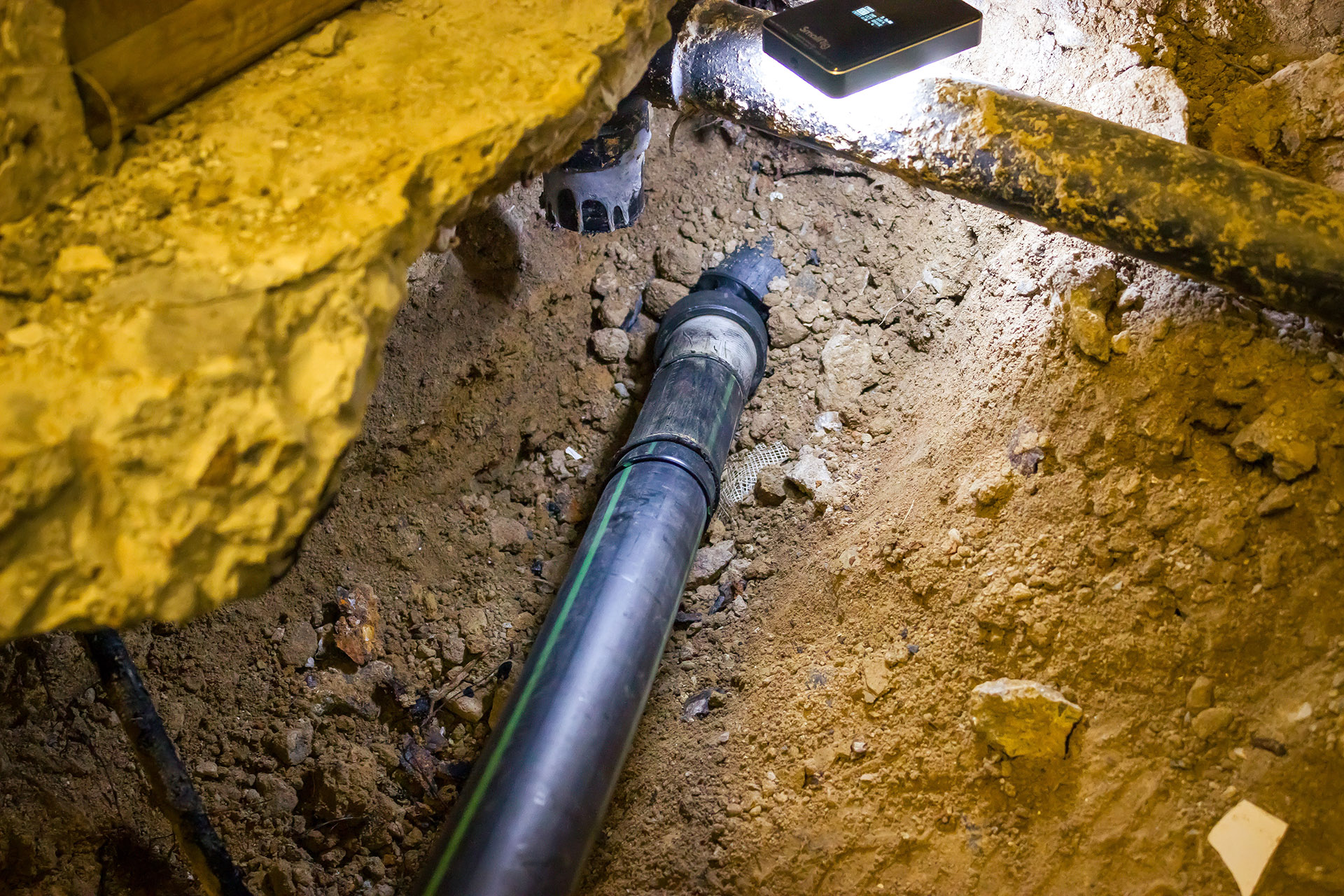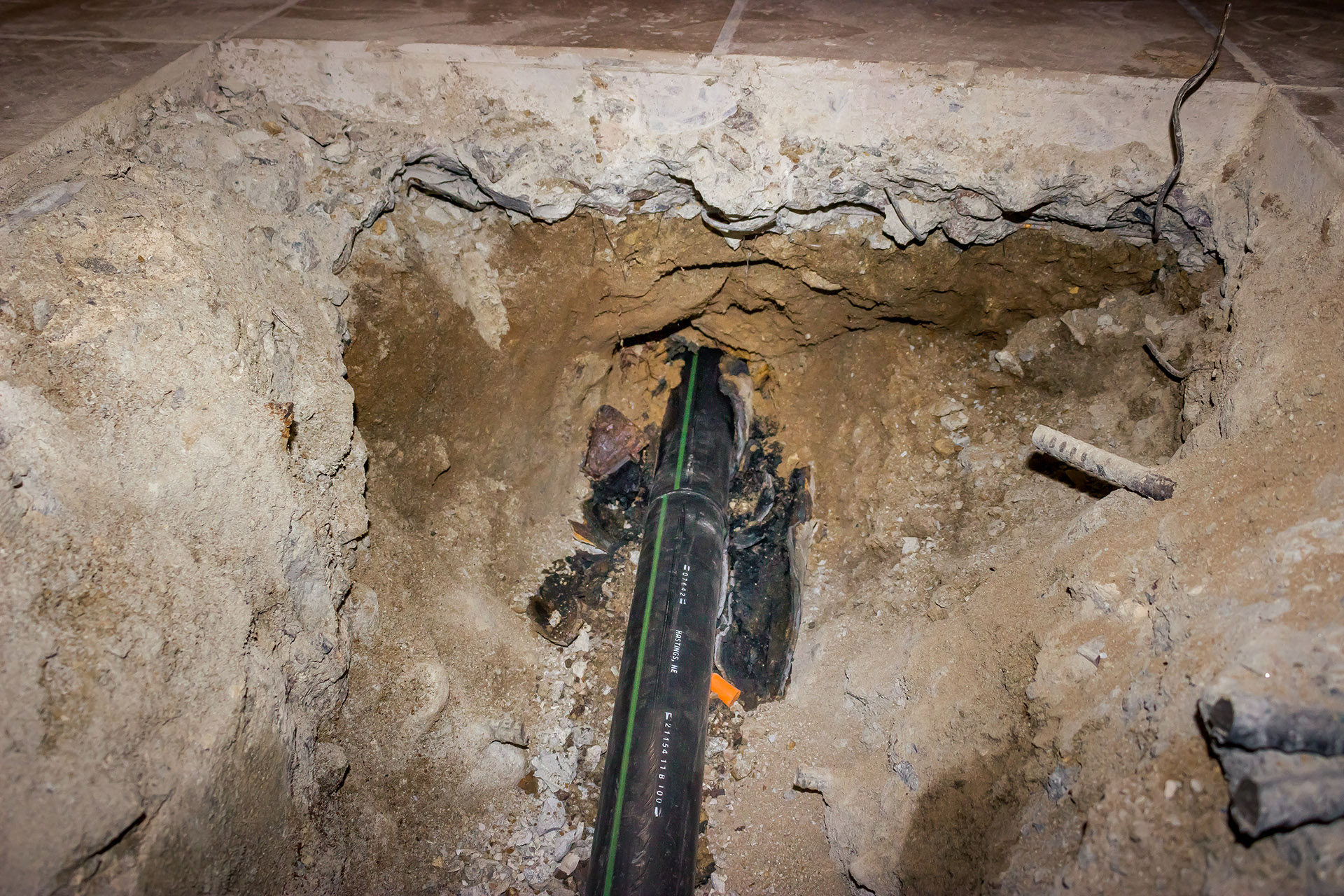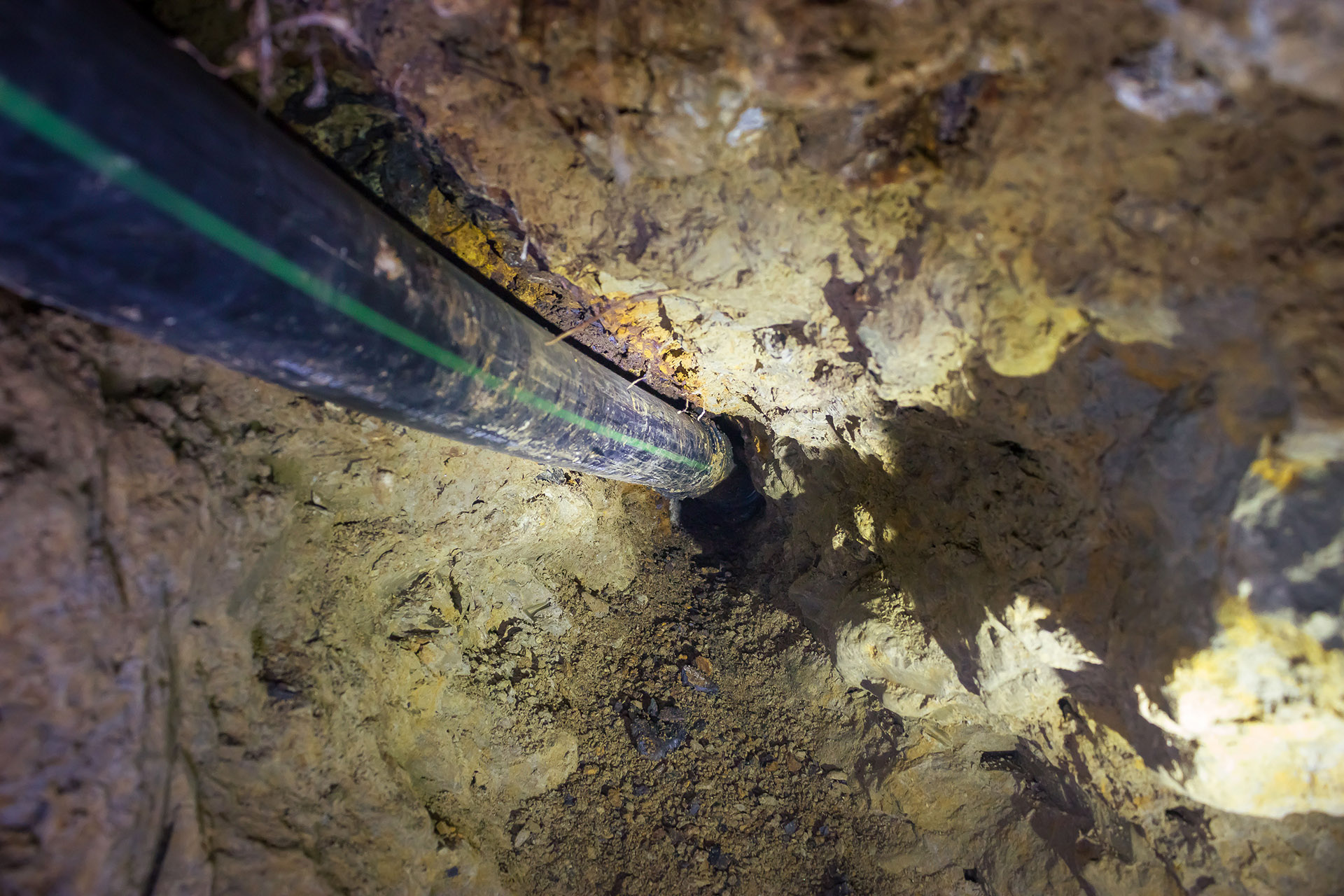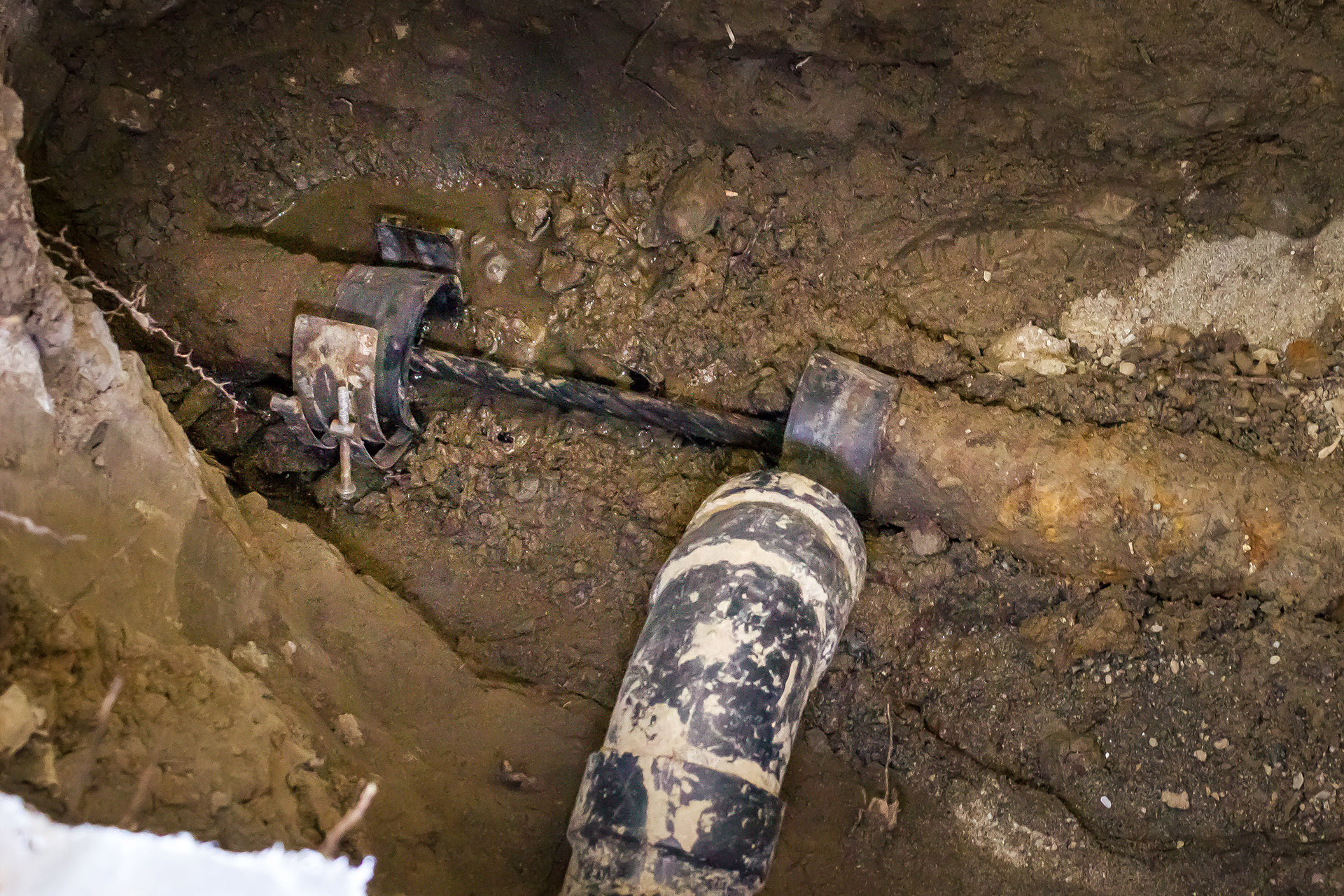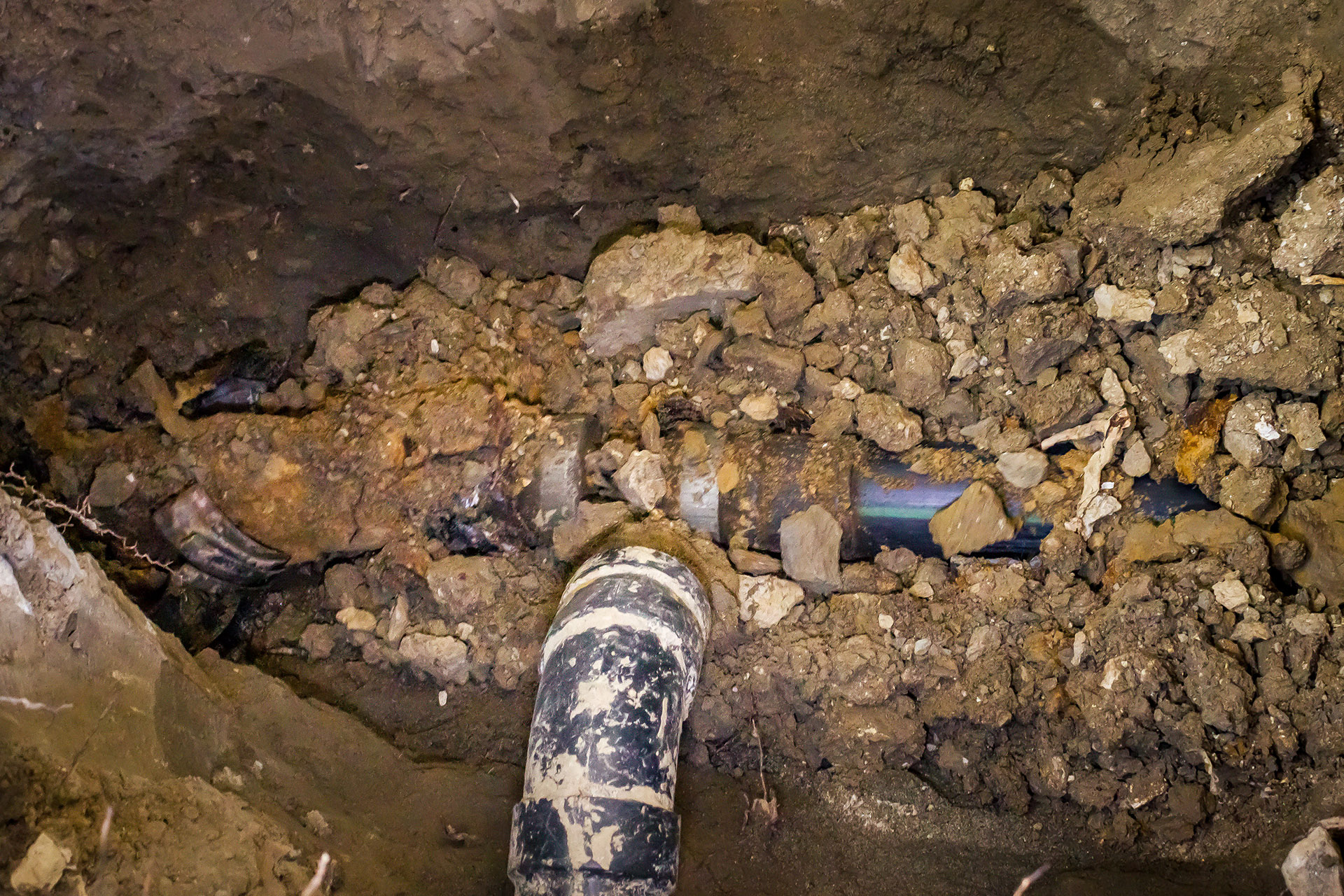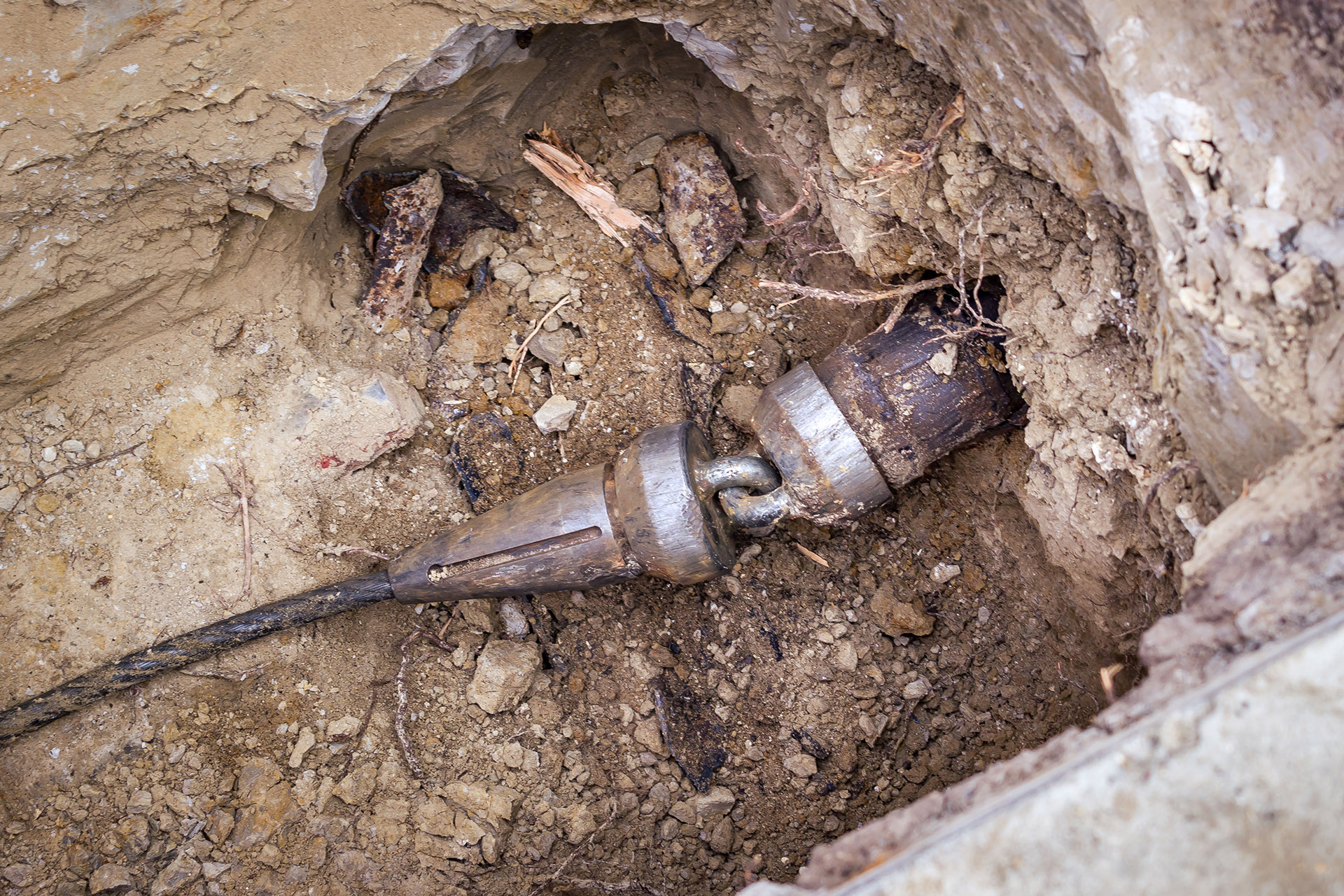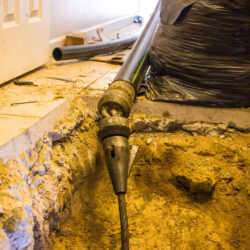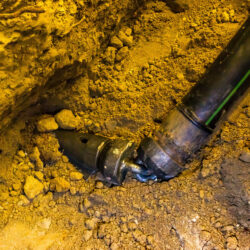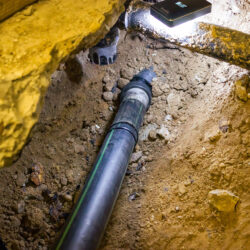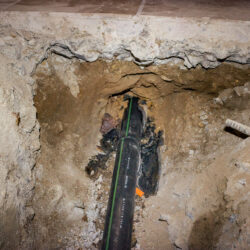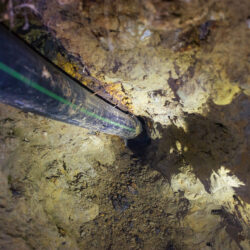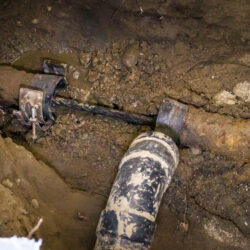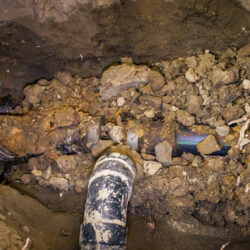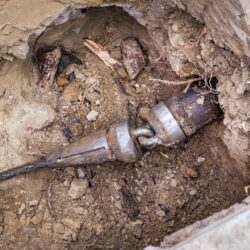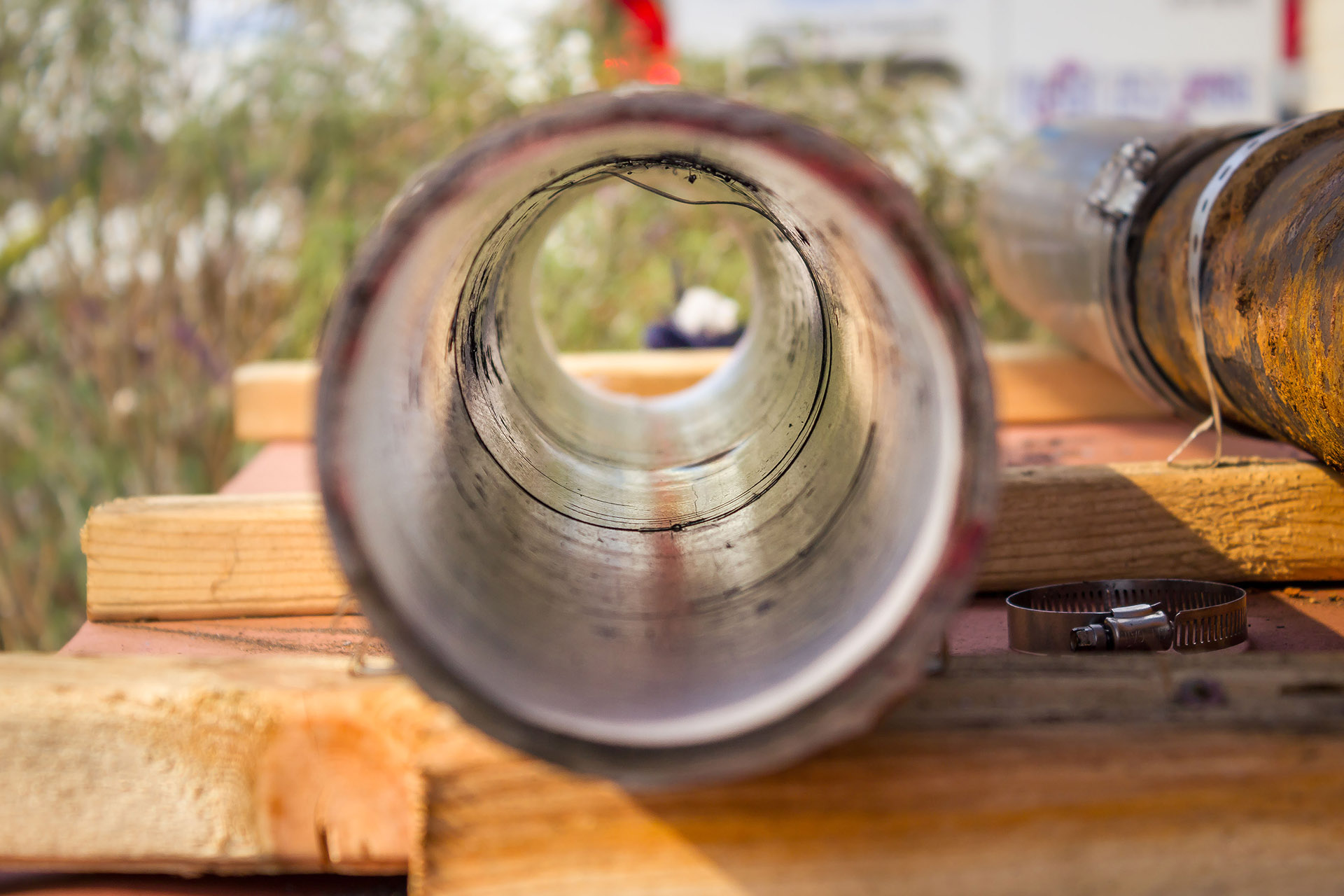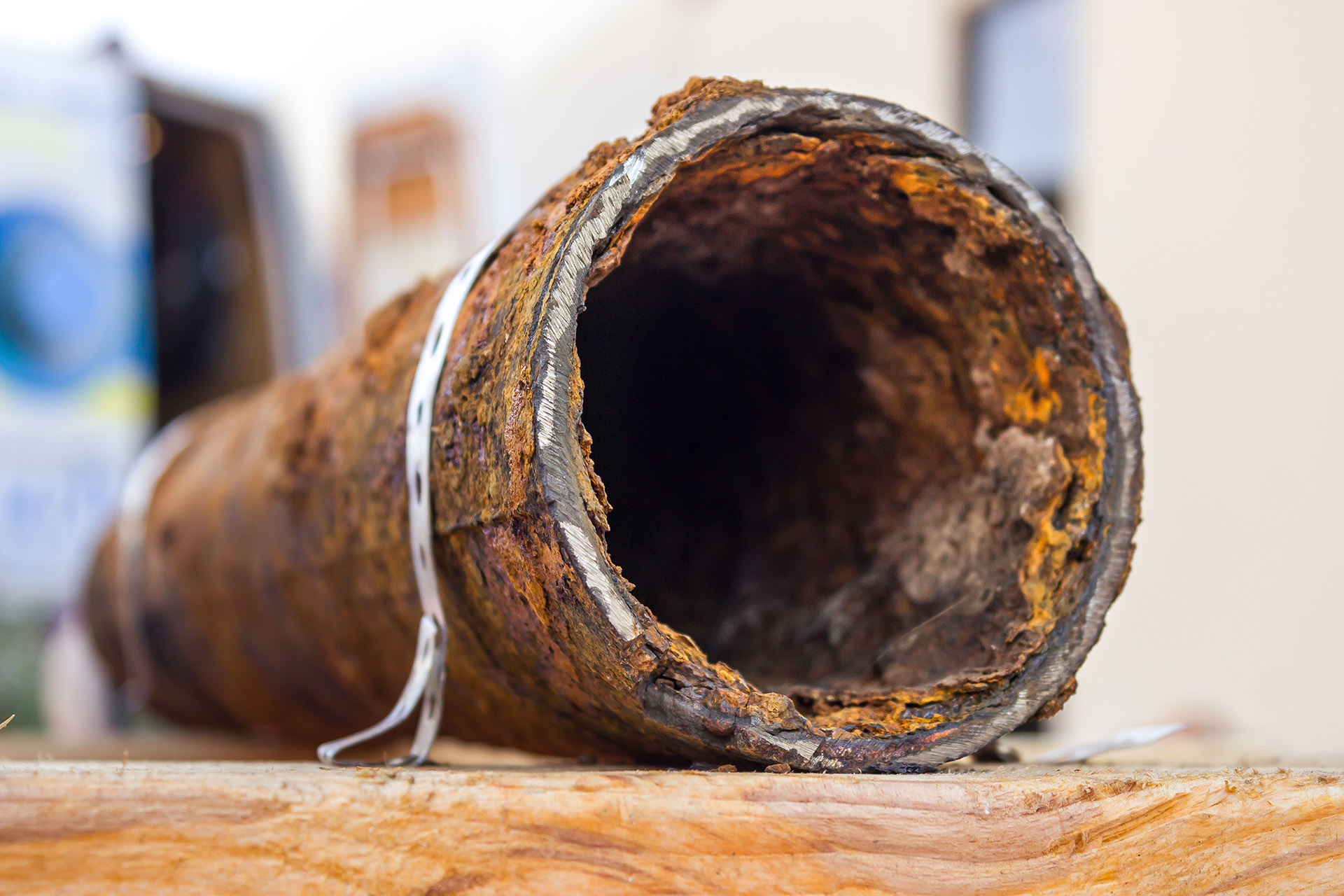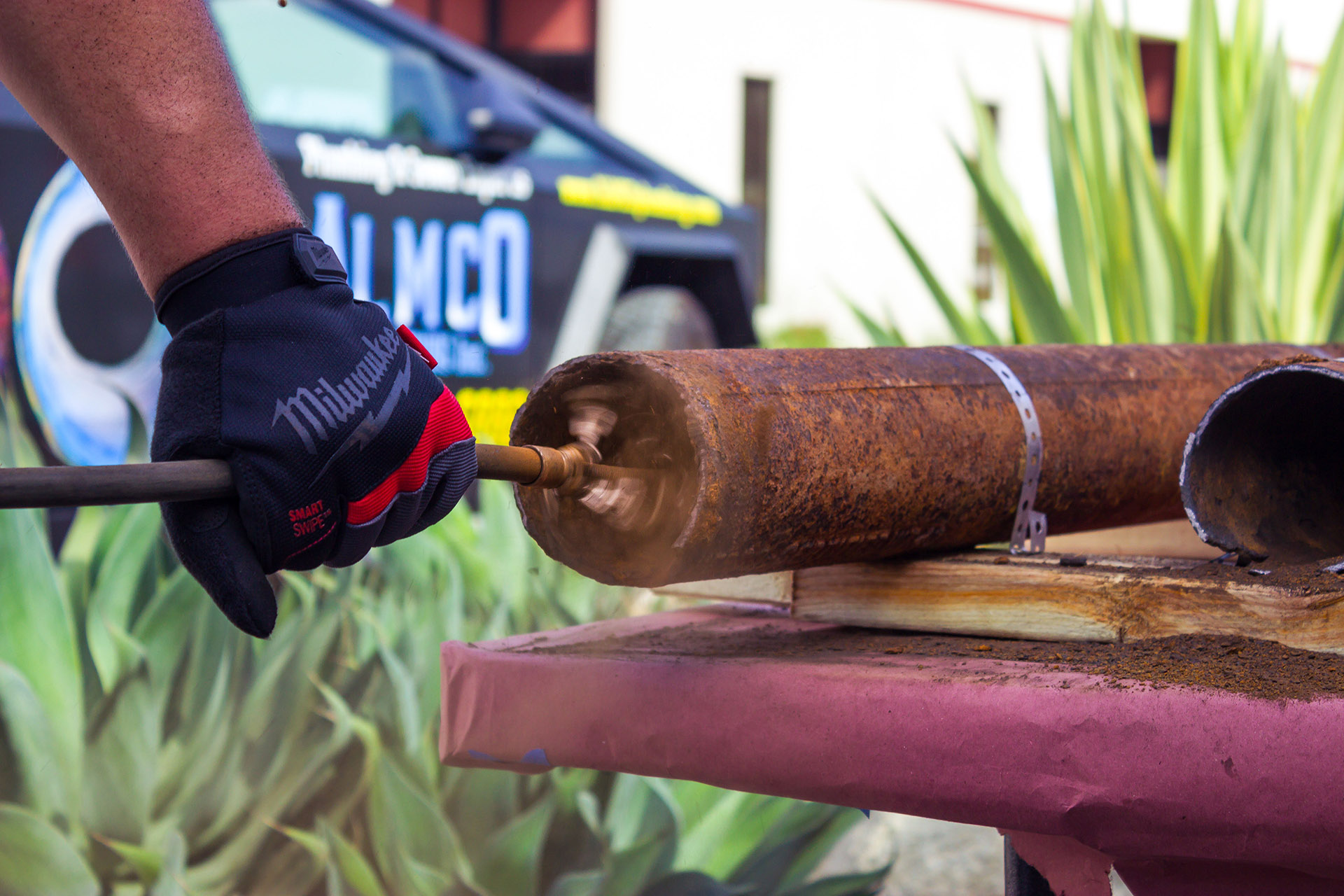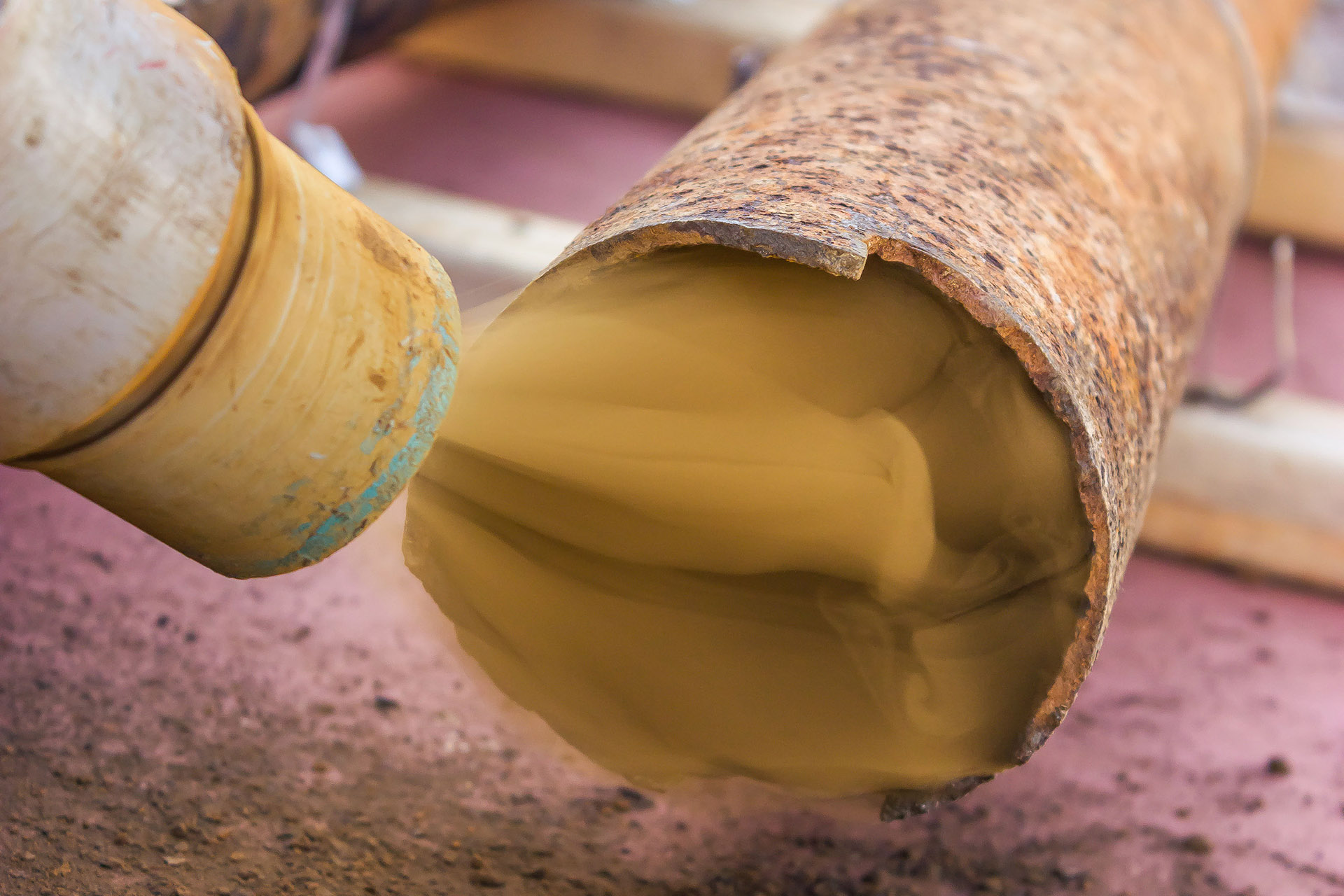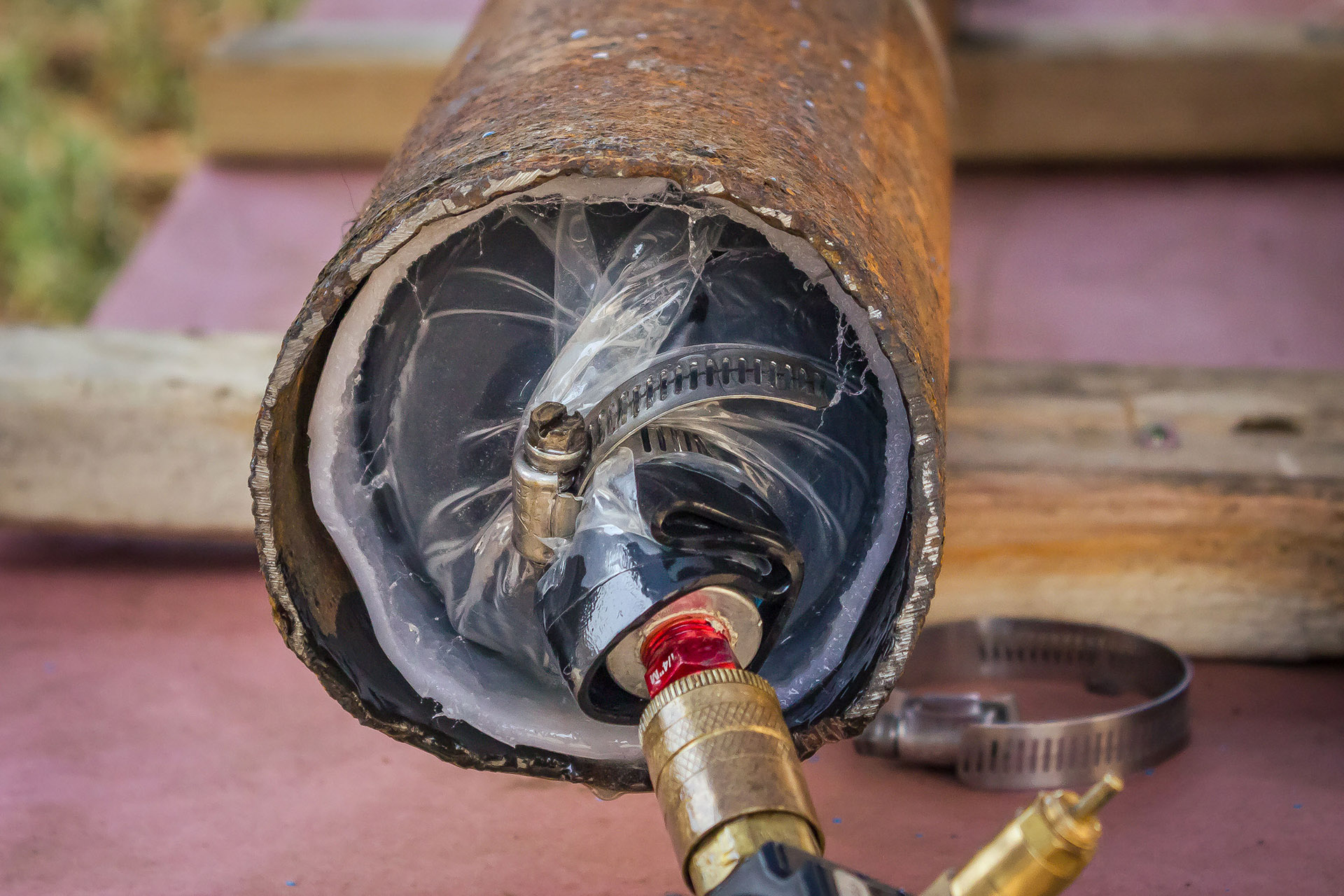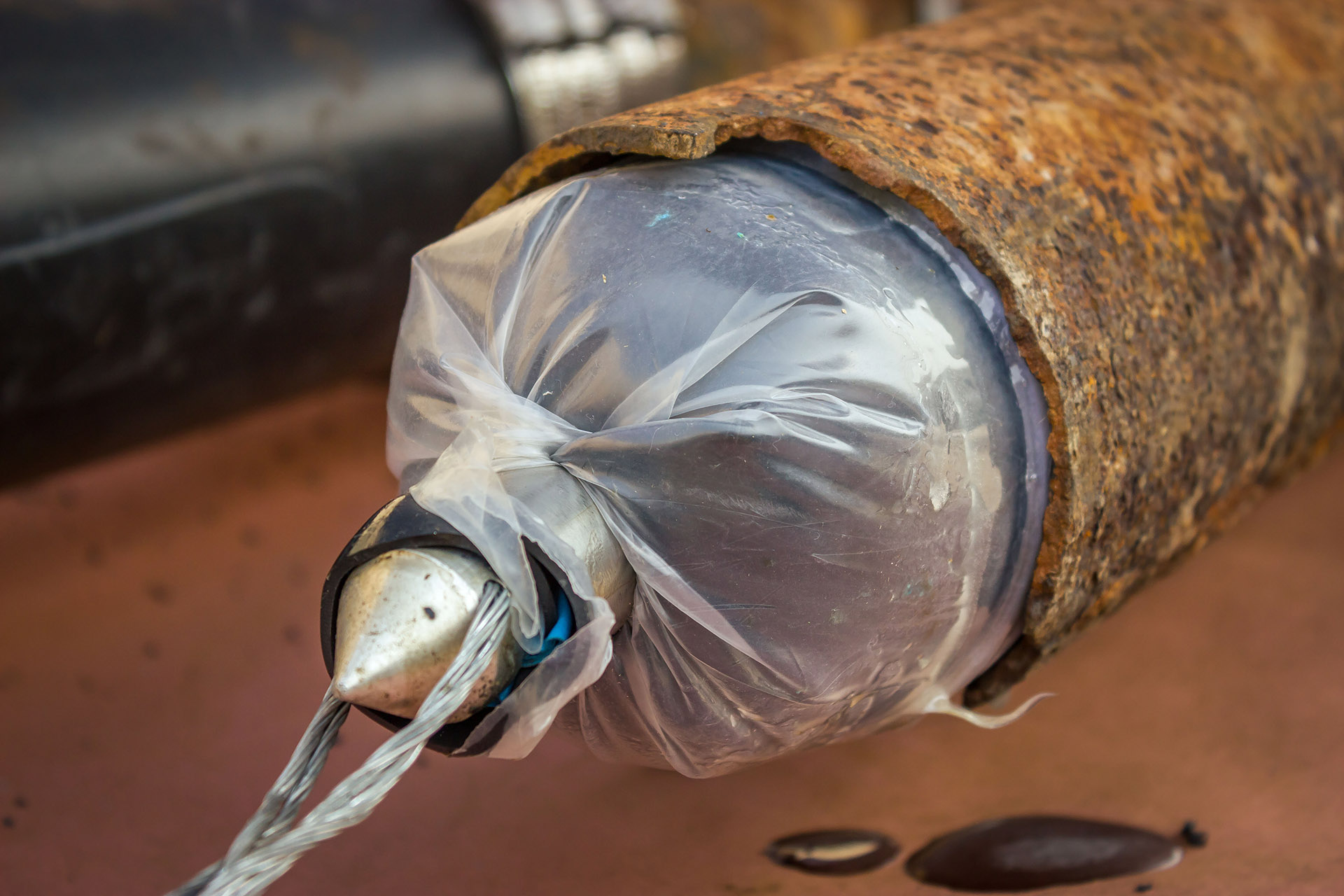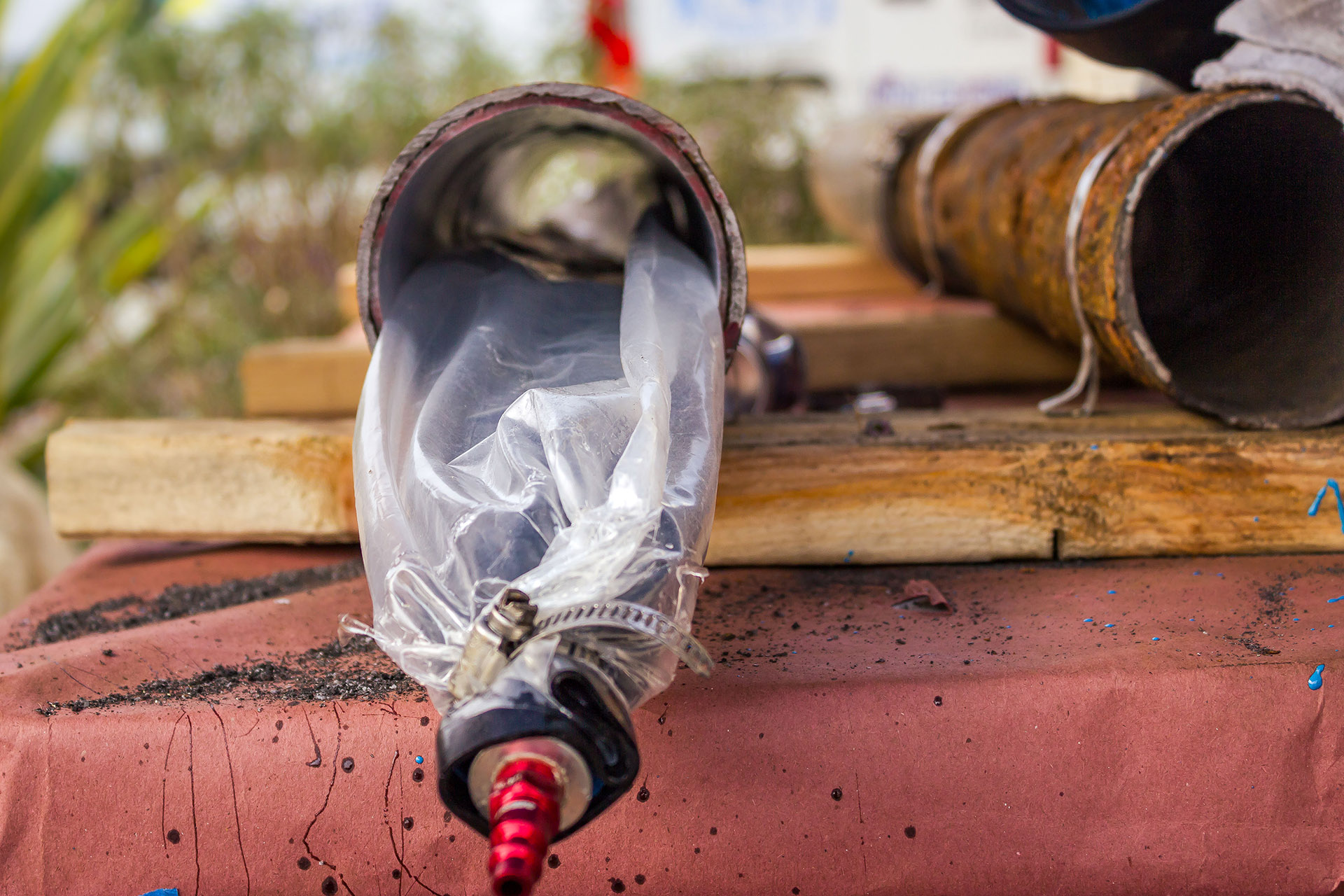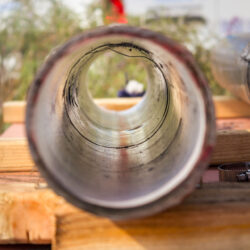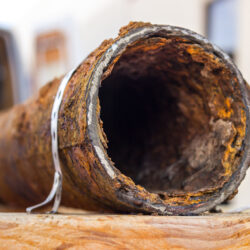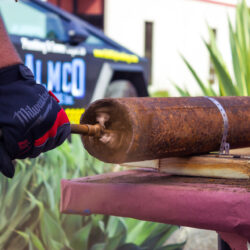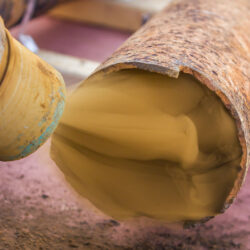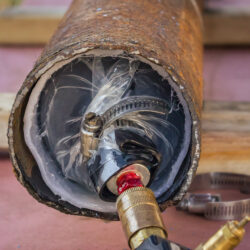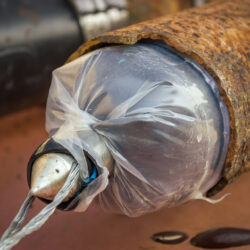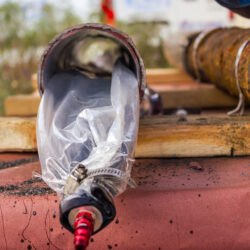Sewer line repair & replacement in San Diego is one of the main services that Almco Plumbing provides. We have been in the sewer line repair & replacement business since 2001, so our experts are familiar with residential sewer systems throughout San Diego and surrounding areas. The accumulated years of experience allow us to give Almco Plumbing customers the best possible sewer repair solutions, with a warranty for many years and at a reasonable price.
Below, you’ll know the causes of sewer line damage and how to get them fixed without digging up your yard, driveway and entire house.
Contents
Causes of Sewer Line Damage in San Diego, CA
A functioning sewer system is a key to comfortable living. Ignoring sewer line problems leads to an escalating series of issues. Here are the most common causes of sewer line damage faced by San Diego residents and businesses.
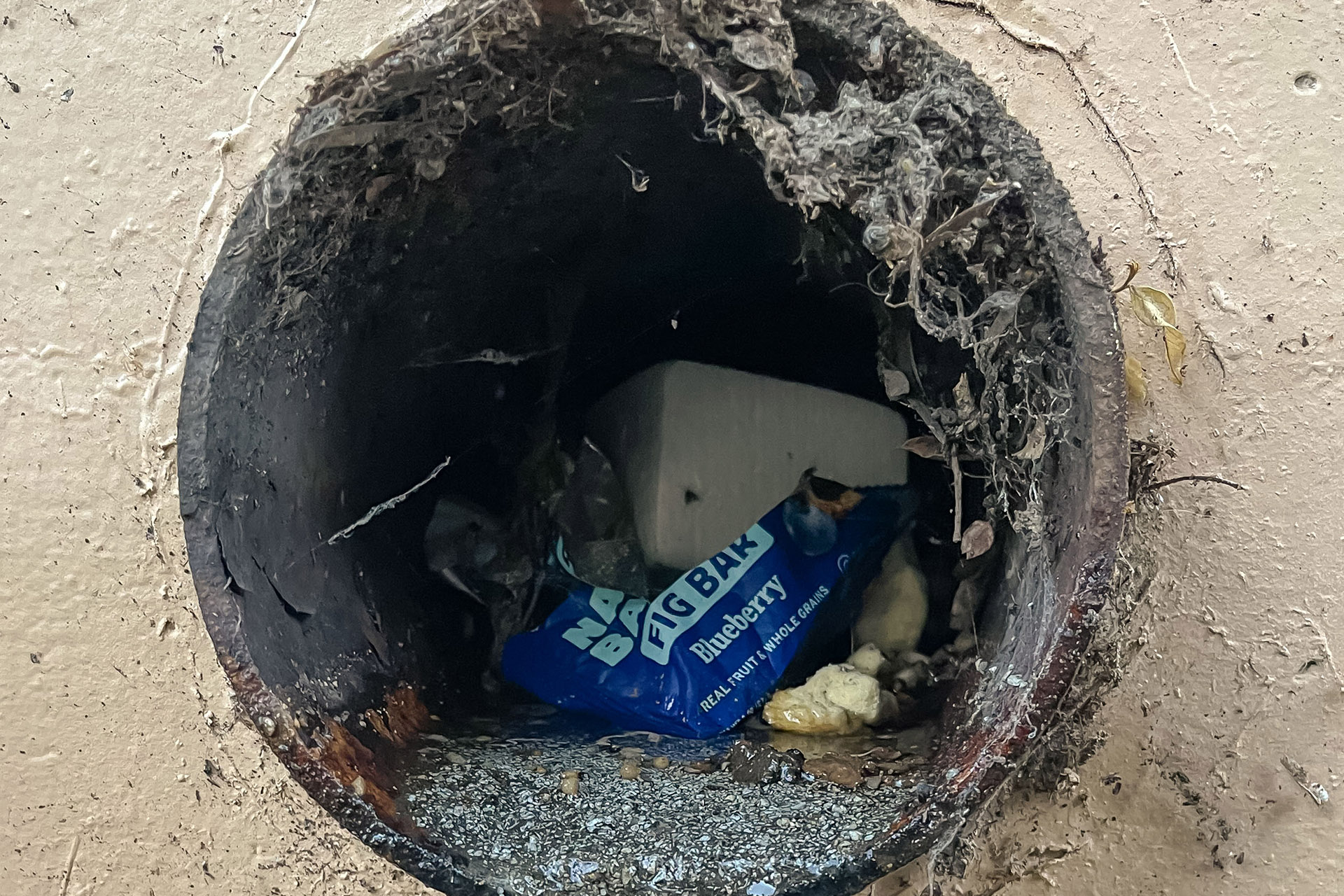
Sewer lines are built to handle only toilet paper and human waste. Flushing objects down a toilet (like wrappers and plastics) can cause a clog.
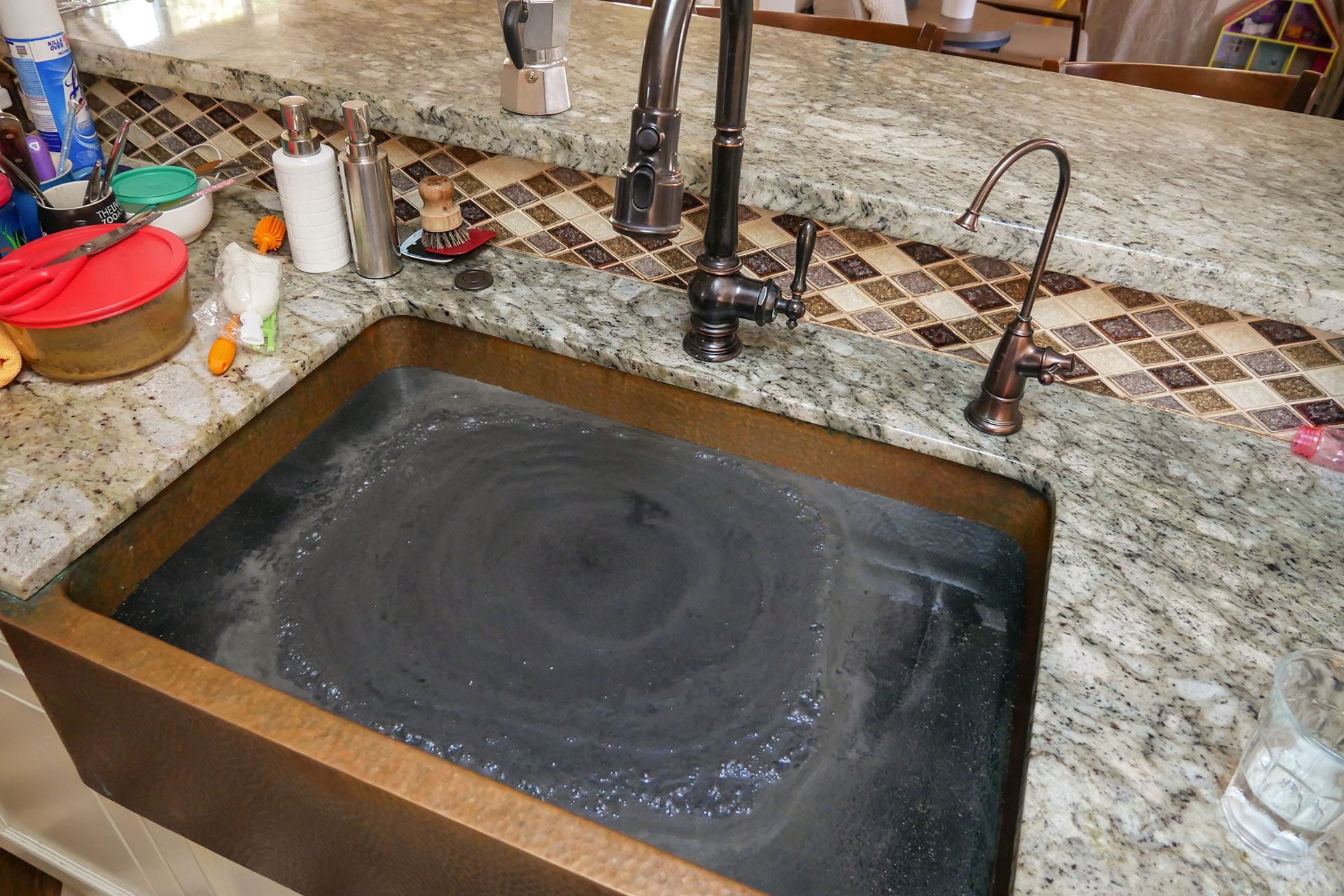
Grease and cooking oil are other blockers for kitchen plumbing. The best solution is to pour these into containers, let them cool, and then dispose of them in the trash. You can also wipe off grease with a paper towel and place it in a trash can.
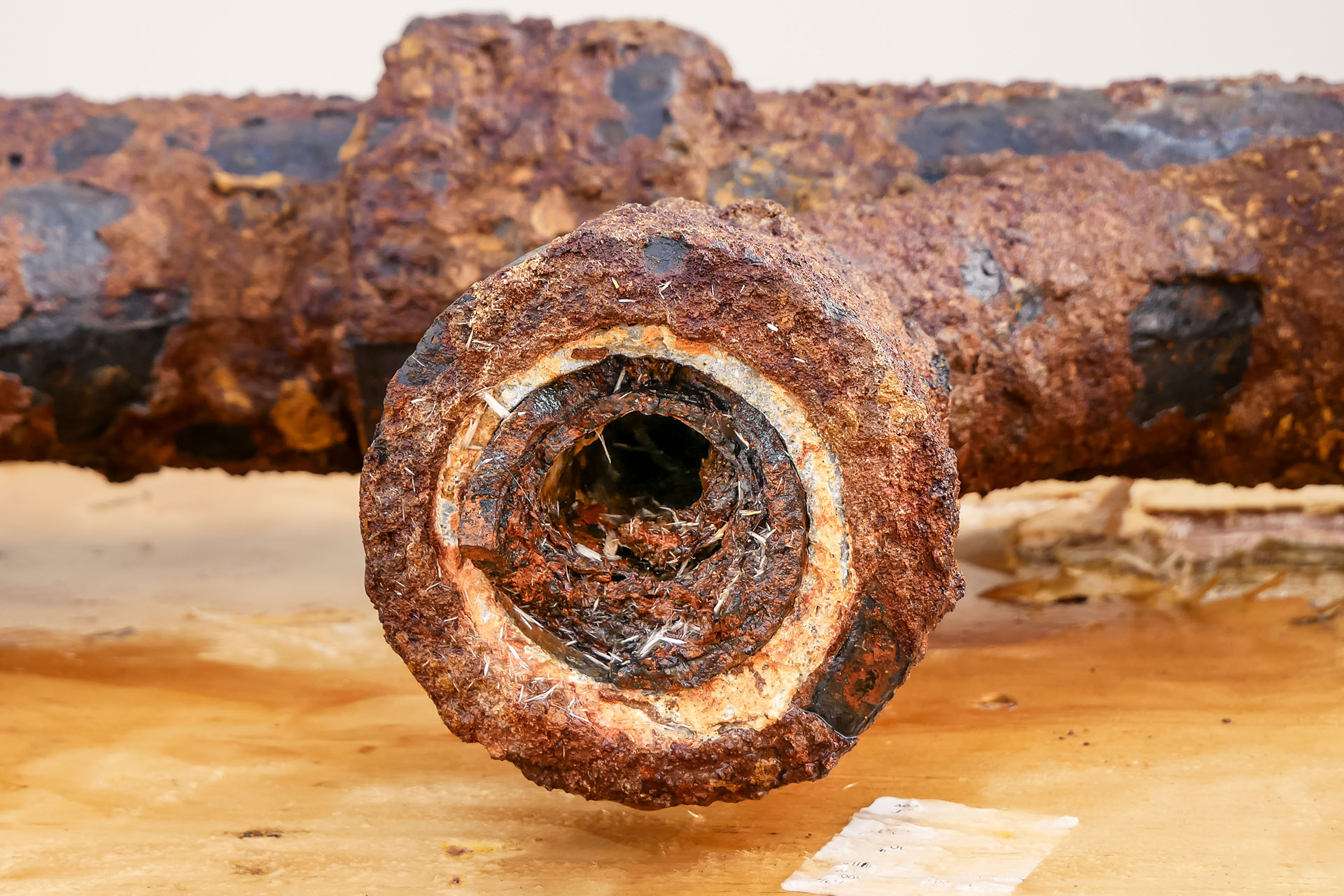
All sewer pipes in residential homes built before 1970 are cast iron, and all pipes from the sidewalk to the city main are clay pipes. They can suffer from corrosion caused by internal wear and tear, resulting in cracks and leaks that require complete replacement.
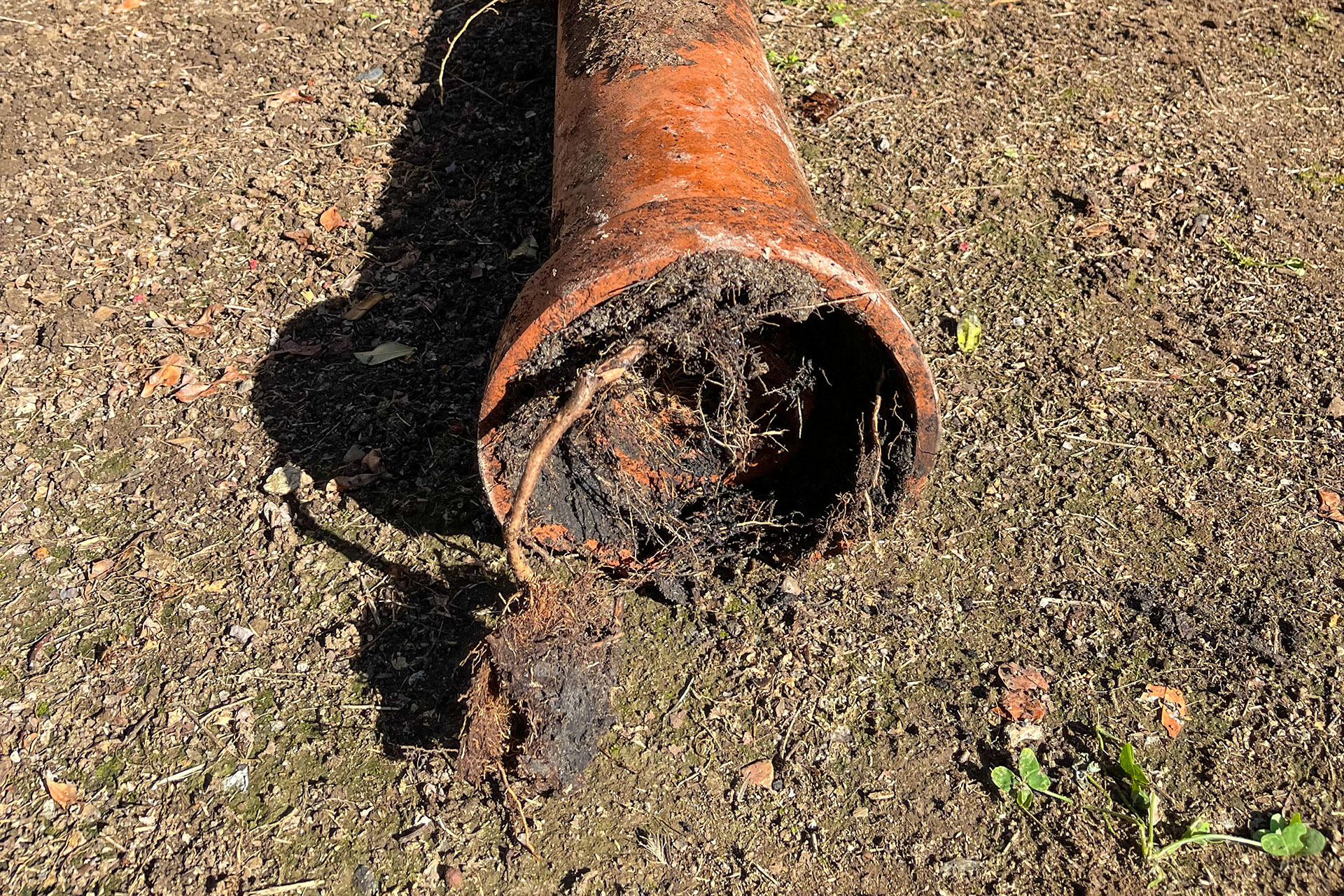
Tree roots are another cause of sewer line damage. As they grow, tree roots follow nutritious water sources, especially if they carry waste. Clay pipes are the most susceptible to sewer line damage. Once a root has grown, it will usually wrap around a clay pipe, often causing it to break.
How to Detect Sewer Damage?
To avoid being left without a working sewer at the worst possible time, we recommend calling the professionals at the first sign of a problem. Here are the most common signs that your home’s sewer pipes need to be checked.
Draining Problems
Some blockages happen from pipes leading directly to a shower or faucet. However, main sewage lines are harder to detect. Those are only detectable if multiple water faucets are blocked simultaneously.
Toilets can also indicate severe blockages. Gurgling sounds from one are a sign to look out for. In this case, your drain line needs to be inspected and possibly repaired.
Bad-smelling Yards
Another sign of broken sewer pipes. Sewers are normally buried six feet below ground, and in hotter climates, broken pipes show their stench fast. Sometimes, you may see a pool of water. That’ll indicate a leak if the pipe is closer to the surface. In that case, the smell will be a clear telltale sign. Also you can see grass more green in the area where sewer pipe broke and sewer water spilled over.
Mold on Walls & Floors
This is a sign to watch out for inside a home. If you detect that, call a plumber immediately.
Main Sewer Pipe Repair & Replacement: Two Solutions
If your main sewer line is broken, then you’ve got 2 options.
The first is to perform a DIY job. You can dig a trench and do a tedious fixing job, which is usually a waste of time and money. And it just bends if you don’t replace the entire sewer system inside. And in this case your secondary damage cost can be double the cost of replacing the sewer system.
The second is your best bet. You can repair a sewer without using a trench. That option is best administered by technicians. It all starts with a video camera entered into a sewer line. From there, the areas that require repair are detected. After that, one of two solutions are chosen:
- Pipe Bursting
- Pipe Lining
Pipe Bursting
If a sewer is excessively damaged, an invasive trenchless approach might be required. That’ll involve pushing a cone-shaped bit into your sewer line, replacing older pipes with a new one. This is a time-consuming option, though it doesn’t necessitate much excavation.
Pipe Lining
The more expensive option. With minimal damage, technicians can insert an inflate tube into your pipe. It’ll then inflate to cover the area of damage, acting as replacement to the damaged line. That proxy hardens overtime, fully obstructing the leak.
Root intrusion in the sewage line can cause leaks. To fix such a problem, you should hire a professional plumber who can hydro-jet the roots in your sewer pipes and then repair the damaged portion of the pipe using trenchless spot repair technology.
Sewer Line Repair & Replacements Step-by-Step
A complete sewer line replacement in a 2–3 bedroom, 2 bathroom, single-story home typically takes Almco Plumbing 2 to 3 days, unless additional work or other issues arise.
- The first day is spent on prep work, including partial floor stripping and excavation.
- The second day is spent directly replacing or lining the sewer lines inside the home. During the night, the entire system is restored to working condition, which allows the use of bathrooms and toilets for the people inside the house.
- On the third day, the demolished floors are concreted (mostly in the bathroom), the construction debris is removed, and the yard areas where the excavation work was performed are tidied up.
